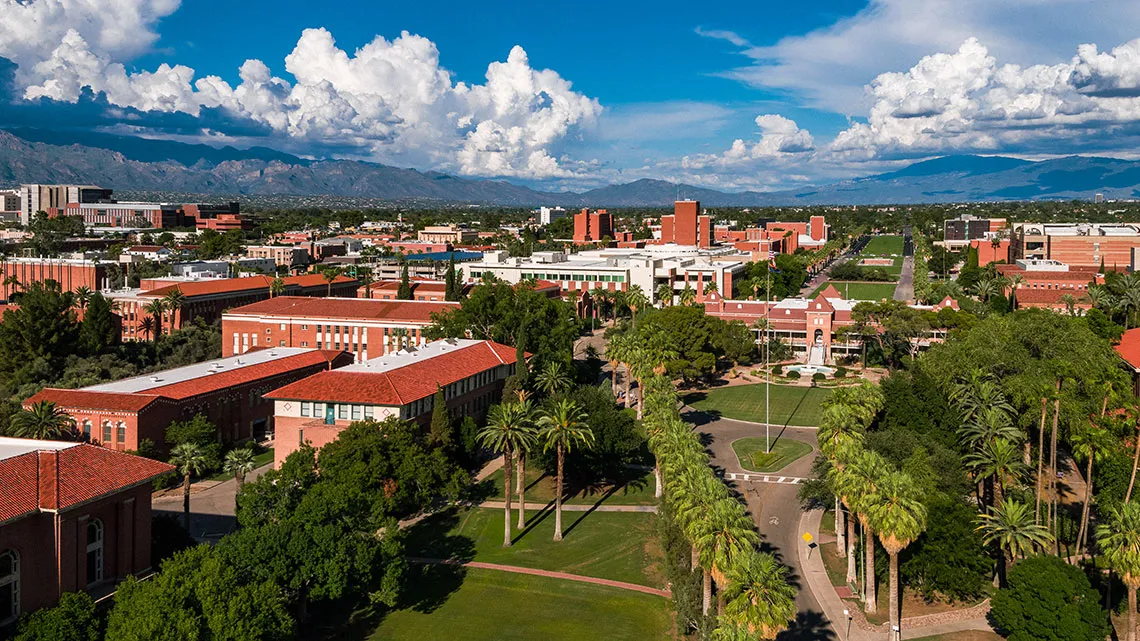UArizona Landscape Architecture Assistant Professors Selected for National Dean’s Equity and Inclusion Fellowship Program

Photo by Drew Bourland, UArizona Marketing and Brand Management.
Kenneth J. Kokroko and Mackenzie Waller, assistant professors of landscape architecture who joined the College of Architecture, Planning and Landscape Architecture at the University of Arizona last year, have been selected for the second cohort of the Dean’s Equity and Inclusion Initiative (DEII) Fellowship Program.

Kenneth J. Kokroko, Assistant Professor of Landscape Architecture
The DEII is a partnership of over two dozen U.S. schools and colleges of architecture, landscape architecture, planning, preservation and design. The two-year fellowship—which this year is comprised of 17 early career faculty—is a scholarly development program that works collectively to nurture a diverse population of emerging scholars focused on teaching and researching built and constructed environments to advance socio-ecological and spatial justice, equity and inclusion.
“We are thrilled that Kenneth and Mackenzie will participate in the Dean’s Equity and Inclusion Initiative,” says CAPLA Dean Nancy Pollock-Ellwand. “This cohort of young scholars from across the country will undoubtedly make critical connections and be inspired by—as well as provide inspiration to—others in their cohort. We are enthusiastic about this opportunity to help further broaden our continuing efforts around equity and inclusion in our college and beyond.”

Mackenzie Waller, Assistant Professor of Landscape Architecture
Launched in the summer of 2021, the cornerstone of the DEII is a cohort-based fellowship program supporting early career faculty in the academy who are significant contributors to the pursuit of equity and inclusion in and through the built environment. Fellows participate in a two-year cohort, including two summer institutes and academic year-round professional development workshops. Additionally, each fellow is paired with an internal mentor (from within their own institution) and an external mentor during their fellowship.
Partner schools nominate fellows with attention to BIPOC and other underrepresented faculty dedicated to the built environment professions and disciplines.
“This is an incredible opportunity to build long-lasting professional and personal relationships and to participate in the creation of a network of scholars and practitioners who learn together, support one another and champion justice, equity, diversity and inclusion in the academy and studies of the built environment,” says Kokroko, whose background includes leading community-based planning and design processes for park, open space and neighborhood planning projects. “I am also very much looking forward to the mentorship possibilities provided by this initiative.”
“I'm hoping to connect with other emerging faculty who are interested in collaborating around research and scholarship that forefronts environmental and spatial justice in the public realm,” says Waller, whose research interests explore how the mediums of story, wildlife and play can serve as strategies to co-create desired futures. “This network will help me share out and learn from a diverse set of experiences and approaches to teaching, research and service to better serve students and the Tucson community.”
In addition to CAPLA at UArizona, the 2022 cohort includes faculty from the Bernard and Anne Spitzer School of Architecture at the City College of New York; College of Architecture, Art and Planning at Cornell University; Graduate School of Design at Harvard University; College of Engineering and Architecture at Howard University; School of Architecture at Tulane University; School of Architecture, Planning and Preservation at the University of Maryland; Taubman College of Architecture and Urban Planning at the University of Michigan; Stuart Weitzman School of Design at the University of Pennsylvania; College of Architecture, Planning and Public Affairs at the University of Texas at Arlington; College of Built Environments at the University of Washington; and School of Architecture and Design at Virginia Tech University.
Participating in the program are members of Dark Matter University, senior faculty and deans from partner schools and members of industry professional associations, including the Association of Colleges and Schools of Architecture (ACSA), American Society of Landscape Architects (ASLA) and Council of Educators in Landscape Architecture (CELA). The professional organizations have offered financial support for the program, as have many of the member academic institutions, including the Spitzer School of Architecture and North Carolina State University.
“Increasing diversity in ways that value and strengthen equity and inclusion in our institutions requires more than what any one school can do. We believe it takes the collective of design and planning schools to change who we hire and what we teach and practice,” states the Dean’s Initiative website.
“We are collectively mentoring the next generation of diverse faculty into successful academic careers,” says Adrian Parr of the College of Design at the University of Oregon. “Working together, we believe that through cross-institutional stewardship of early career faculty, the initiative will expand and enrich the community of designers, planners and scholars in tenure-track faculty positions across our schools and the nation.”
Learn more and meet the 2022 DEII fellows at www.deansequityandinclusioninitiative.com.



